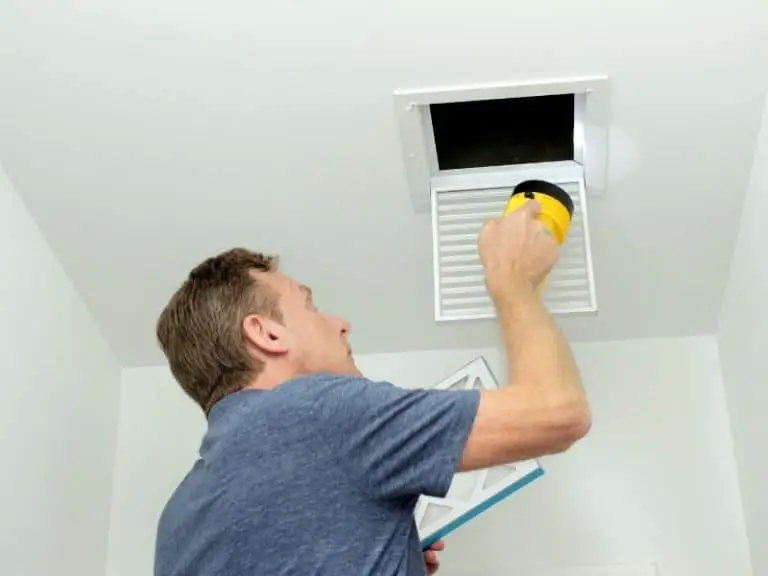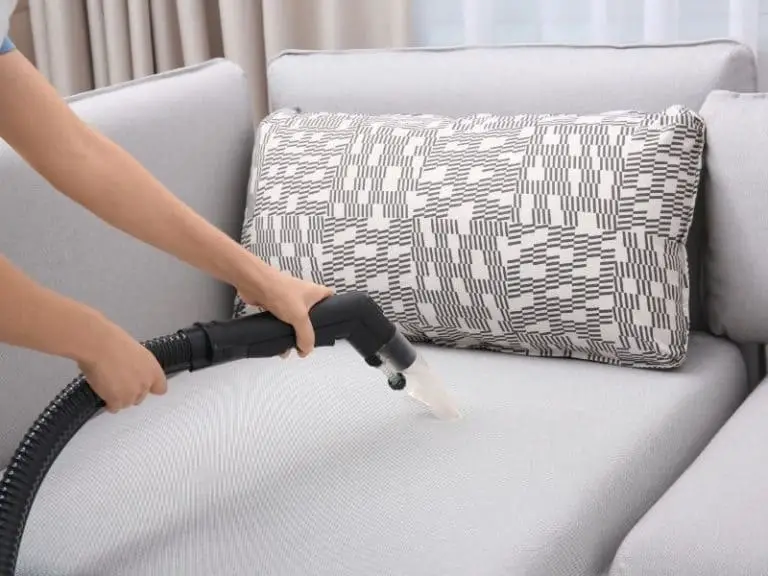Do You Know All 10 Ways Bed Bugs Spread From House to House
Bed bugs cannot fly like mosquitoes. They cannot jump like fleas, either. Despite their physical limitations, these blood-sucking critters can still easily spread from one house to the next.
So, in other words, just because you are doing your best to stay away from budget hotels and secondhand furniture that could be swarming with bed bugs doesn’t necessarily mean that you won’t end up with an infestation.
If one of your neighbors has bed bugs, there is a possibility that you may wind up with them, too.
Instead of panicking the minute you spot a professional exterminator van parked next door, read on. Below you will learn the answer to the question “how do bed bugs spread from house to house?”
Arming yourself with the right information is one of the smartest steps that you can take!
Bed Bugs are Great at Hiding
Before we discuss some of the ways on how bed bugs can infest one home after the other, let us first quickly talk about one very important fact. And it’s none other than bed bugs have six legs.
Their tiny legs are not very good for climbing. It’s because of this why they tend to steer clear of smooth surfaces such as glass and metal.
It’s also for the same reason why they tend to feed only at night when their human hosts are catching some shut-eye and lying still — bed bugs cannot cling to your skin.
Despite this, they can crawl perfectly well, although it may not be apparent while watching them in action.
Bed bugs can crawl three to four feet per minute on most surfaces. It may not seem impressive but, in human terms, that’s like an adult walking in a hurry.
Thanks to their legs, bed bugs can go from one part of a house to the other in just a day or two. With enough determination, they can crawl from one house to the other in a small amount of time, too!
They are also fantastic hitchhikers — they can hitch a ride on your clothes or in your luggage, which allows them to travel effortlessly from city to city or country to country.
It’s due to this why an infestation at home may start from you staying in an infested hotel room miles away!
Related Post: Bed Bugs And HVAC: Recipe for Disaster
The Type of Residence is a Major Factor
Although bed bugs can crawl extremely well, there are certain things that can get in their way, thereby slowing them down. Some of them include walls, stairs, and yards.
These creatures, which are about the size of an apple seed, will stop at nothing until they come across hiding places that are close to their human hosts.
The rate of their spreading can be affected by the type of residence that you are living in.
Some residences make it quite easy for bed bugs to wreak havoc on one family to the next. Others may give them a hard time due to being far apart from one another or the presence of obstructions between them.
No matter the case, one thing stays true: you may wind up with a bed bug infestation if a neighbor has it!
Let’s take a look at various types of residences and their effects on the spread of bed bugs.
Apartment
Nothing can make an apartment tenant who is aware of what it’s like to live with bed bugs panic more than knowing that another tenant is facing a bed bug infestation.
Because one unit is just a wall away from the other, it can be easy for bed bugs to travel from unit to unit. Refrain from assuming that you’re off the hook just because the tenant with a bed bug-related issue is on a different floor.
Here’s a fact: bed bugs can travel from one floor to the other through pipes, vents, and floor and ceiling cracks.
And also, don’t forget the fact that they can cling to the clothes of a tenant who could visit your unit!
When one unit has a bed bug infestation, it’s not unlikely for the landlord to have the rest also inspected by the experts. Otherwise, an apartment-wide infestation may come into being.
Condominium
You can think of a condominium as an apartment complex, except that the units can be owned instead of rented.
It’s great for those who want to have their own properties but also like to enjoy the least amount of maintenance — leaks, floods, and other issues are often the responsibility of the property manager or association.
Since condominiums are practically apartments, they are just as conducive to a bed bug infestation. Those nocturnal insects can easily infest one unit after the other, especially if the pros are not contacted right away.
Definitely, bringing home bed bugs from a hotel can quickly make you the most hated owner in the complex!
Single-Family Home
If a bed bug infestation occurs in a single-family home, it’s very much likely for a member of the family to be the one responsible for it. However, in some instances, bed bugs may have invited themselves in.
Either way, it’s for certain that the breadwinner of the family will shoulder the cost of dealing with a bed bug infestation, either by means of some DIY solutions or with the help of professional bed bug exterminators.
Springing into action without delay can help fend off a house-wide bed bug problem.
This is what’s nice about owning the infested home: you get to decide which approach you feel is better.
When living in a single-family home, the risk of ending up with a bed bug infestation if a neighbor has it is slightly lower.
This is especially true if there’s an alley or a yard between the non-infested and infested homes.
However, anything is possible. Bed bugs can crawl, hitch a ride, or be blown by the wind, as you will learn in a few.
Townhouse
Put simply, a townhouse lets you enjoy the perks associated with living in a condo and living in a single-family home…
- A townhouse may be smaller than an average house, but it’s easier on the pocket to own it.
- You may share exterior walls with other units alright, but you usually have your own patio or yard.
Can bed bugs travel across the yard? Yes, they certainly can. And because the yard of a townhouse is usually smaller than that of a single-family home, the risk of winding up with a bed bug infestation is higher.
Just like when living in a condominium, there are association rules to follow, including the steps to take in the event of a bed bug infestation.
Usually, it’s a must for the townhouse owner to report to the association the bed bug issue immediately so that inspection and extermination may be made.
The Takeaway
Bed bugs find it trouble-free to invade one home after the other. However, the speed at which they can spread can be affected by certain factors, such as the type of dwellings involved.
Even if you live in the countryside where the homes are miles away from one another, it is still possible for you to encounter a bed bug infestation.
However, the risk of having one is definitely higher if you live in the heart of the city or the suburbs. Needless to say, no matter where you are, you may end up sharing your bed with bed bugs!
Here’s How Bed Bugs Spread From One House to Next
DIY bed bug extermination is cheap. And this is why a lot of homeowners, especially budget-conscious ones, try to finish off their domestic encounter with those blood-sucking creatures on their own.
Sadly, home remedies for bed bugs, including the ones that are tried and tested effective, have limitations.
For instance, DIY solutions for bed bugs are usually only helpful for a minor infestation — they may fail to yield results if multiple rooms or the entire house is infested.
Leaving the job to professional bed bug exterminators, in many cases, is the way to go.
There are instances, too, where it is highly recommended to get in touch with the pros ASAP to keep a small problem from turning into a massive one that can wreak a lot of havoc on your pocket as well as on everyone’s life.
It’s also a must to have a pretty good idea of how bed bugs can infest one house after the other. Knowing how bed bugs in another home can end up in yours can help prepare you for the worst.
So, how do bed bugs spread from house to house? Here are ten surprising ways how.
By Tracking Carbon Dioxide
Did you know that bed bugs feed about once a week only?
The reason why you could wake up every morning with bed bug bites is that different bed bugs hatch from eggs at different times, which is why they have different feeding times. The bigger the infestation, the higher the risk of having bed bug bites every waking hour.
Bed bugs won’t hesitate crawling for hours just to jab their proboscises, their straw-like mouth parts for sucking blood, into your skin. They can easily track you down by means of the carbon dioxide you breathe out.
It’s due to this exactly why it is a terrible idea for you to sleep in a different bedroom if yours is infested.
Similarly, if the infested apartment unit or home next to yours suddenly went unoccupied, bed bugs in it would search far and wide to look for a human host, and they could end up inside your home where there’s blood supply!
Perhaps you have read somewhere or heard from someone that bed bugs can live for a year without feeding.
Well, that’s true. But it doesn’t mean that those creepy crawlers won’t do their best to get their weekly blood meal.
The minute that their stomachs growl due to hunger, they will spring into action right away to get their dose of blood. And if they cannot find a host in the home that they are living in, they are likely to invade another.
By Hiding in Secondhand Furniture
There are many benefits that come with getting your hands on secondhand furniture.
For instance, not only is it good for your pocket but also the environment — it’s a form of recycling which helps save the planet in a lot of ways.
Unfortunately, there are also a few downsides that come with going for used furniture.
If the secondhand gem that you are eyeing came from an infested home, chances are that there are bed bugs and eggs in its cracks and crevices. And when you install it in your home, an infestation is likely to strike in no time.
This is especially true since…
- Adult female bed bugs lay one to seven eggs per day.
- Bed bug eggs hatch in six to ten days only.
- Baby bed bugs (called “nymphs”) mature in about five weeks.
So, doing the math, you could face a serious infestation in just a little over a month after introducing into your home secondhand furniture with bed bugs!
Aside from buying secondhand furniture, you should also avoid picking up items abandoned at the side of the road.
Worry not if your budget is keeping you from opting for brand new furniture instead. That’s because you may disinfest the item before you welcome it into your home.
Just see to it that you carry out thorough extermination of adult bed bugs and their eggs to make sure that you won’t end up facing an infestation anytime soon.
By Crawling Out Of Vacuums
There are lots and lots of DIY solutions for bed bugs that you can find posted on the internet. Some of them can really help bring the infestation to an end, while others may only leave you frustrated.
When it comes to home remedies for bed bugs, the use of a vacuum or steam cleaner, or both, can impress.
A vacuum cleaner, particularly the kind that comes with a disposable dust bag, can help suck out bed bugs and their eggs. This is especially true if you use the right nozzle attachment and point it to the right places.
On the other hand, a steam cleaner can kill bed bugs and destroy eggs on contact, provided that it can produce steam hot enough.
Instead of buying their own vacuum or steam cleaner, some homeowners prefer to rent them. However, this can do more harm than good, especially if you don’t have an existing bed bug infestation.
Some of those who rent these electrical devices do so to rid their homes of bed bugs through the DIY way.
While it’s true that they can help eliminate those blood-sucking insects, the problem is that bed bugs may end up hiding in the ports and openings of these devices.
And, if you happen to rent one recently utilized for solving a bed bug infestation, it’s possible for some bed bugs hiding in it to crawl out and start colonizing your home!
If you don’t want to risk it, buying a vacuum or steam cleaner is a better idea. After all, it is something that you can use for many other things than just removing bed bugs from your life.
By Clinging To Bags and Clothes
Can someone who has bed bugs bring them to your house? They certainly can!
It’s true that bed bugs have legs that do not permit them to attach to the skin such as lice, ticks and fleas, which is also the reason why they cannot crawl on smooth surfaces such as metal, glass and glazed tiles.
Despite this, bed bugs do not have trouble clinging to clothes, such as those that your visiting relatives and friends are wearing.
Because of this, one of the definitive answers to the question “how do bed bugs spread from house to house?” is by welcoming a house guest whose home has an infestation.
The minute that the person who is paying you a visit steps foot inside your home, some of the bed bugs in his or her clothes may fall off and hide in the rug, sofa, table, desk — anything nearby that has a crack or crevice or an underside, which is the perfect hiding place for bed bugs while it’s not yet time to drink some blood.
When they get hungry, they will look for you in your bedroom via the carbon dioxide you breathe out.
Aside from clothes, bed bugs can also hitch a ride from their birthplace to your home by means of someone’s shoes, purse, or suitcase. It pays to know whether or not a relative or friend of yours has bed bugs at home.
If you cannot say no to a visitor with a bed bug problem, disinfest furniture and surfaces that the individual came into contact with as soon as he or she steps foot outside your home by:
- Using a commercially available bed bug insecticidal spray.
- Going for a bed bug home remedy that many people swear by.
As always, better safe than sorry.
Escaping From an Extermination
When it comes to dealing with a bed bug infestation, homeowners have a couple of options. First, they can sort out the problem via the DIY route. Second, they can let the experts carry out the job for you.
No matter the choice, one thing is a definite must: the process of extermination should be done properly.
Failure to wipe out bed bugs via the preferred solution can cause some of them to survive. And to be able to live to tell the tale, they may attempt to crawl as far away as possible from ground zero.
Some of them may end up crawling far enough to wind up inside your abode, which is quite easy for them to do if you live in an apartment.
So, can you get bed bugs from a neighbor’s house? You surely can!
Similarly, your neighbor may end up with a bed bug infestation if you have one and you attempt to end it by doing home remedies for bed bugs improperly or hiring inexperienced bed bug exterminators.
Before deciding between the DIY approach and getting in touch with the pros, do your assignment first.
If you want to save some money and deal with the problem with your own two hands, make sure that you carefully research which home remedies you should give a try as well as how to perform them.
If you want the industry experts to take care of the infestation, see to it that you contact a local bed bug exterminating company trusted by a lot of homeowners in your area.
With the Help of the Wind
Flying insects can get from point A to point B simply by flapping their wings. Those that are excellent jumpers simply have to hop repeatedly to get from place to place.
On the other hand, insects that can neither fly nor jump have no choice but to travel by crawling. Aside from crawling, bed bugs can go places by hitching a ride in clothes and luggage.
Did you know that insects, no matter the preferred mode of travel, can be dispersed by the wind?
Some of the most compelling examples of wind dispersal of insects were published in an online journal some time in 2009.
The said article stated that, back in the early 1970s, Colorado beetles from Poland and Germany invaded Sweden. They were able to do so by being dispersed by southerly winds, scientists said.
A similar thing happened back in the late 1970s when corn-leaf aphids, which were rare in Sweden, infested the south of the country. Scientists believed that they traveled by means of the southwesterly winds.
Bed bugs are small and lightweight, which makes it quite easy for the wind to blow them away.
If you are living where it’s windy, you may end up with a bed bug infestation if one of your neighbors has it. Inclement weather conditions can also cause bed bugs to infest one house after the other.
As a matter of fact, bed bugs in the lawn of your neighbor (yes, it is possible for bed bugs to live outside, although it is for certain that they will eventually crawl indoors) may wind up inside your home and start an infestation from scratch there with the help of a leaf blower!
Via Kids and Pets
Human blood is the most favorite meal of bed bugs.
However, refrain from assuming that it’s the only type of blood that they can consume. If desperately hungry, it’s not uncommon for bed bugs to also turn to the blood of animals.
Some of them include pawed pals such as cats and dogs. Do you have an indoor pet that you allow to spend some time outdoors every now and then?
Then there is a possibility for it to bring inside some bed bugs. This is especially true after hanging out around bed bug-infested premises.
The fur of your pet and also its penchant to scratch when it feels something on its skin can make it grueling for bed bugs to drink its blood.
But, if famished enough, they will stop at nothing just to have their meal.
Other than pets, kids may also be the culprits behind a bed bug infestation.
Just like what’s mentioned earlier, bed bugs can live outside. However, it won’t take long before they realize that they have higher chances of surviving by getting indoors and heading straight to the bedroom.
Thanks to children, particularly those that love playing in the yard, bed bugs around the home may end up indoors easier and faster.
Again, bed bugs may not be able to fly or jump alright, but their legs allow them to cling to clothes, including the ones that your little one is wearing while having a blast outdoors.
Through a Public Laundromat
One of the best ways on how to prevent bed bugs from spreading from room to room or house or house is by exposing them to high temperatures.
It’s because of this reason why the use of a steam cleaner is one of the best DIY ways to exterminate adult bed bugs and destroy their eggs.
This is also exactly why it is highly recommended to wash your clothes in hot water as well as tumble dry them.
Unfortunately, heading to the laundromat where you can wash your clothes in hot water can be the reason for you to end up with a bed bug infestation. This is especially true if at least one of the customers has the problem.
Refrain from assuming that just because you are planning on washing your clothes in hot water doesn’t necessarily mean that a trip to the laundromat won’t increase your chances of having a bed bug infestation.
If you happen to rest your behind on a seat or use a laundry basket with bed bugs, you may end up bringing home some of those critters!
Follow these tips when washing your clothes at the laundromat, and you’re golden…
- Inspect the seat first before sitting on it.
- Check the laundry basket for the presence of bed bugs.
- Avoid placing the laundry basket on the floor.
- Stash and seal clean clothes in a garbage bag.
- Do not use any of the available tables for folding your clothes.
By Riding Public Transportation
Can bed bugs travel from house to house on their own? Yes, they can! They can migrate to a nearby house by crawling. It’s also possible for them to infest adjacent houses by being blown by the wind, as mentioned earlier.
Traveling from one house to another house that’s several miles away is also possible for bed bugs to do. For this, they need to ride a taxi, bus, train or an airplane just like everybody else.
The seats on public vehicles are usually upholstered, and this makes them excellent temporary hiding places for bed bugs.
By temporary, it means that, sooner or later, they will attach themselves to the clothes of the passengers, thereby allowing them to find new homes to live in.
Since one out of five Americans has bed bugs at home, you are at higher risk of having bed bugs, too, if you rely on public transportation to get from one place to the other.
Especially if you live where bed bugs are extremely common, it’s a good idea to wash your clothes in hot water as soon as you get home.
If you think that driving your own car gets you off the hook, better think again!
You may end up facing a bed bug infestation, too, if you happen to give a ride to someone who has some bed bugs in his or her clothes or belongings. So, in other words, be careful who you allow inside your vehicle.
Via Dropping by Establishments
Despite what they’re called, bed bugs can live in many places other than a bed. They can camp out anywhere in your bedroom. Similarly, they can reside anywhere in your home.
Aside from a house, bed bugs can also thrive in many other places, provided there are human beings around that can unwittingly offer them their blood meal.
Earlier, we established the fact that bed bugs can be in laundromats and on public vehicles. However, they are not the only ones that can provide bed bugs with a home, but many others like…
- Schools
- Libraries
- Theaters
- Hospitals
- Offices
- Restaurants
- Coffee shops
- Airports
- Hotels
- Beauty parlors
- Retail stores
For as long as an establishment grants bed bugs access to human blood, it can be infested.
However, because people go in and out of establishments, there is a huge possibility for some of the bed bugs to get relocated to other establishments or homes via the customers’ shoes, clothes, bags, and others.
You can think of establishments as pit stops for bed bugs when spreading from house to house.
How far can bed bugs travel outside? They can get very far. But they won’t hesitate to stop by different establishments to feed, until such time that they have the opportunity to get to another location where they can thrive better.
Just Before You Check for Bed Bugs In Your House
How do bed bugs spread from house to house?
Well, based on the information above, those tiny critters that feast on blood at night move from one dwelling to the other in many ways.
In some instances, they can travel to a different house even if it’s several miles (or oceans) away from their birthplace!
Bed bugs can easily spread from room to room, and they can easily spread from house to house, too.
Needless to say, there is a huge possibility for you to end up with a bed bug infestation if you are living in an apartment, condominium, townhouse, or single-family home if the house next door has bed bugs.
Knowledge, as they say, is power.
And this is why having an idea of how bed bugs can easily spread from one house to the next allows you to be smarter when it comes to keeping a bed bug infestation at bay as well as dealing with the problem just in case it affects you and your loved ones sooner or later.
Photo credit: ©canva.com/towfiqubarbhuiya
Medical Disclaimer: TheHomePestControl is a digital publisher and does not offer personal health or medical advice. The contents of this website are not intended to substitute for professional medical advice, diagnosis, or treatment.
Affiliate Disclaimer: As an Amazon Associate, I earn from qualifying purchases made on our website. If you make a purchase through links from this website, I may earn a commission at no additional cost to you.






